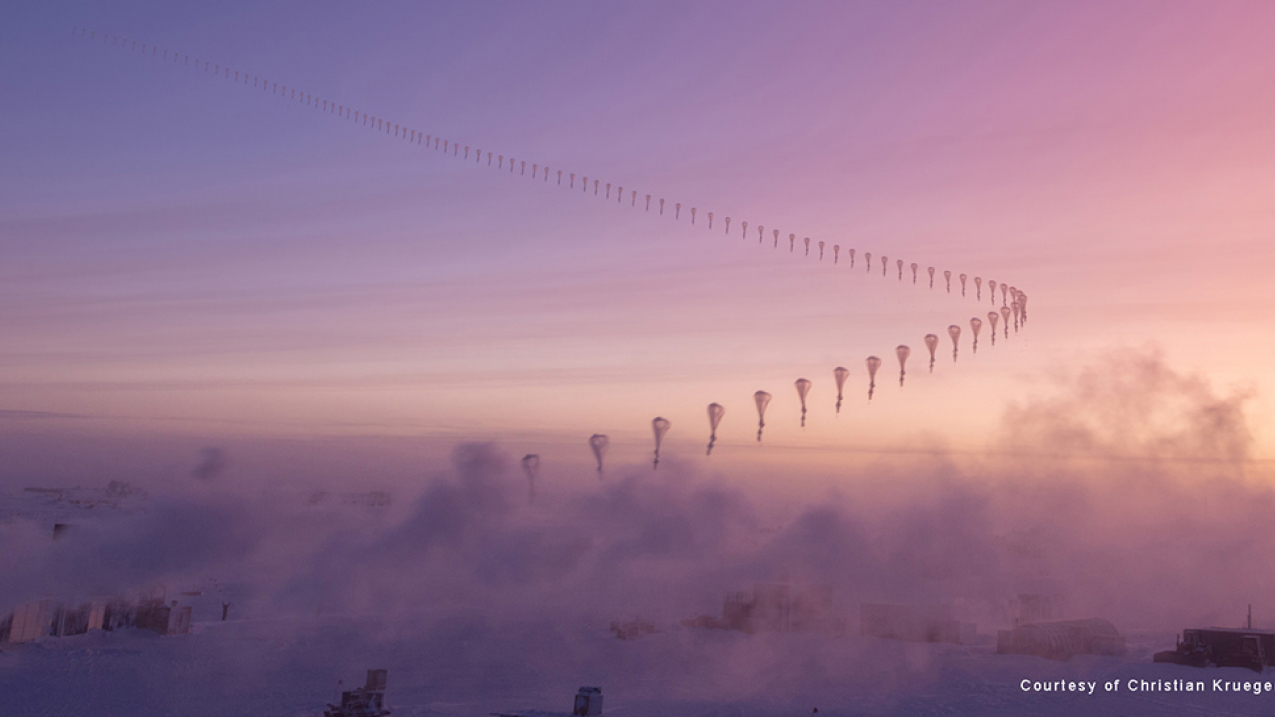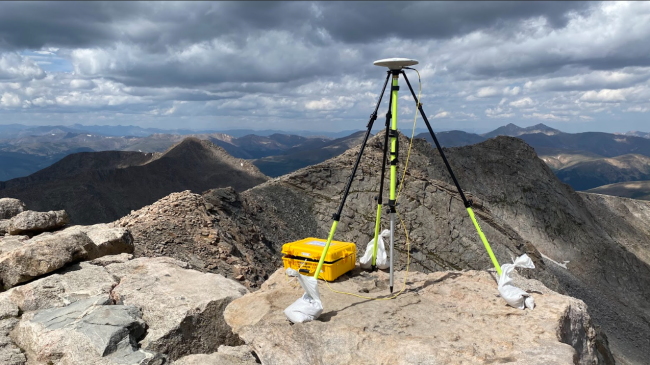Chlorofluorocarbons, or CFCs, were once considered a triumph of modern chemistry. Stable and versatile, these chemicals were used in hundreds of products, from military systems to the ubiquitous can of hairspray.

Going, going, gone: A NOAA weather balloon floats into the pre-dawn Antarctic sky over the Amundsen-Scott South Pole Station in this time-lapse photograph taken September 15, 2017. The balloon was carrying an ozonesonde -- instrument to measure ozone during NOAA's annual monitoring of the Antarctic ozone hole. Rising emissions of a strictly regulated chemical threatens recovery of the ozone hole, according to new NOAA research published in the journal Nature, May 16, 2018. (Image credit: Christian Krueger/IceCube)
Then in 1987, NOAA scientists were part of an international team that proved this family of wonder chemicals was damaging Earth’s protective ozone layer and creating the giant hole in the ozone layer that forms over Antarctica each September. The Montreal Protocol, signed later that year, committed the global community to phasing out their use. Production of the second-most abundant CFC, CFC-11, would end completely by 2010.
Except that maybe it didn’t.
A new analysis of long-term atmospheric measurements by NOAA scientists shows emissions of the chemical CFC-11 are rising again, most likely from new, unreported production from an unidentified source in East Asia. The results are published today in the journal Nature offsite link.
“We’re raising a flag to the global community to say, ‘This is what’s going on, and it is taking us away from timely recovery of the ozone layer,’” said NOAA scientist Stephen Montzka, the study’s lead author. “Further work is needed to figure out exactly why emissions of CFC-11 are increasing, and if something can be done about it soon.”
The findings of Montzka and his team of researchers from CIRES offsite link, the UK, and the Netherlands, represent the first time that emissions of one of the three most abundant, long-lived CFCs have increased for a sustained period since production controls took effect in the late 1980s.
CFC-11 is the second-most abundant ozone-depleting gas in the atmosphere because of its long life and continuing emissions from a large reservoir of the chemical in foam building insulation and appliances manufactured before the mid-1990s. A smaller amount of CFC-11 also exists today in older refrigerators and freezers.
The Montreal Protocol has been effective in reducing ozone-depleting gases in the atmosphere because all countries in the world agreed to legally binding controls on the production of most human-produced gases known to destroy ozone. As a result, CFC-11 concentrations have declined by 15 percent from peak levels measured in 1993.
Though concentrations of CFC-11 in the atmosphere are still declining, they’re declining more slowly than they would if there were no new sources, Montzka said.
The results from the new analysis of NOAA atmospheric measurements explain why. From 2014 to 2016, emissions of CFC-11 increased by 25 percent above the average measured from 2002 to 2012.
Scientists had been predicting that by the mid- to late century, the abundance of ozone-depleting gases would fall to levels last seen before the Antarctic ozone hole began to appear in the early 1980s.
Montzka said the new analysis can't definitively explain why emissions of CFC-11 are increasing, but in the paper, the team discusses potential reasons why.
"In the end, we concluded that it’s most likely that someone may be producing the CFC-11 that’s escaping to the atmosphere," he said. "We don't know why they might be doing that and if it is being made for some specific purpose, or inadvertently as a side product of some other chemical process."
If the source of these new emissions can be identified and controlled soon, the damage to the ozone layer should be minor, Montzka said. If not remedied soon, however, substantial delays in ozone layer recovery could be expected.
Media contact
Theo Stein, 303-497-6288


